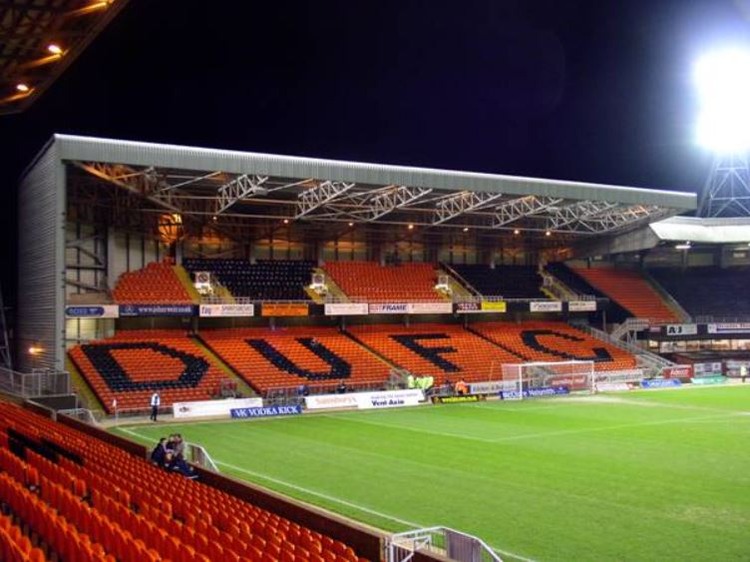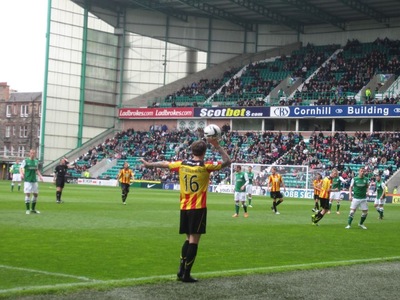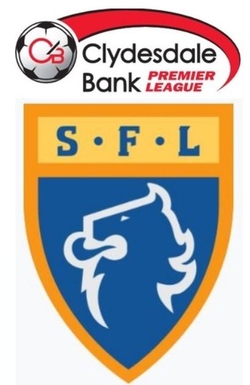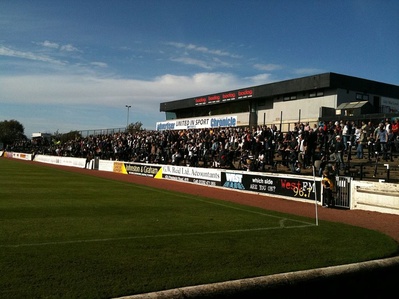Scottish Championship Stadiums & Stats
The second-tier in the Scottish Football League pyramid is the Scottish Championship. Technically the Championship was formed in 2013 when the Scottish Premier League and Scottish Football League merged, though of course there’s been a second-tier of football North of the border since way before then.
On this page you’ll learn about the history of the Scottish Championship as well as information about the sorts of stadiums that you’ll find if you go to watch the football played in it. As is the case with other British football leagues, matches are played in a round robin format, with three points awarded for a win, one for a draw and none at all to a team that loses. We’ll give you a bit more info about the format here, too.
Stadium Stats
| Stadium | Year Opened | Capacity | Ave Attendance | Record Attendance | Record Attendance Match |
|---|---|---|---|---|---|
|
Caledonian Stadium
Inverness Caledonian Thistle |
1996 | 7512 | 2406 | 7753 | Inverness CT v Rangers (2008) |
|
Firhill Stadium
Partick Thistle |
1909 | 10102 | 4641 | 49838 | Partick Thistle v Rangers (1922) |
|
Hampden Park
Scotland / Queen's Park |
1903 | 51866 | 50597 | 149547 | Scotland v England (1937) |
|
Tannadice Park
Dundee United |
1870 | 14223 | 5505 | 28000 | Dundee United v Barcelona (1966) |
Team Stats
| Team | Year Founded | Nickname | Team Owner |
|---|---|---|---|
| Dundee United | 1909 | The Tangerines, The Terrors | Mark Ogren |
| Inverness Caledonian Thistle | 1994 | Caley Thistle, Caley Jags, The Pride of the Highlands | Ross Morrison |
| Partick Thistle | 1876 | The Jags, The Maryhill Magyars, The Harry Wraggs, Thistle | The Jags Foundation |
| Queens Park FC | 1867 | The Spiders, The Glorious Hoops |
Ticket Prices
| Stadium | Season Ticket Price (Adult) | Season Ticket Price (Conc) | Season Ticket Price (Junior) | Match Ticket Price (Adult) | Match Ticket Price (Conc) |
|---|---|---|---|---|---|
| Dundee United | £489 - £529 | £214 - £319 | £44 - £290 | £19 - £28 | £10 - £15 |
| Inverness Caledonian Thistle | £277 - £328 | £183 - £267 | £61 - £108 | £20 - £22 | £15 - £17 |
| Partick Thistle | £310 - £310 | £220 - £220 | £0 - £100 | £20 - £20 | £15 - £15 |
| Queens Park FC | £160 - £160 | £40 - £40 | £40 - £40 | £12 - £12 | £2 - £2 |
Scottish Championship Stadiums

If you speak to an English football supporter about the game in Scotland then most of them will speak in patronising tones about how it’s just a two-horse race and the standard is poor. As anyone who watches Scottish football regularly will tell you, that is deeply unfair. Things might not be that competitive at the top of the league system, but further down the leagues things are immensely competitive. So much so, in fact, that teams often drop in and out of the league on such a regular basis that it’s not easy to know which teams to expect in which leagues.
Because of that movement of teams between leagues it’s tricky to speak definitively about the sort of stadiums you’ll encounter from one season to the next. There is an eclectic mix of football grounds in operation in Scotland, with the Championship acting as a good representation of that. For example, in the 2017-2018 season there was the home ground of Dumbarton, with its capacity of a little over 2,000, as well as Tannadice Park where nearly 15,000 people can watch Dundee United play. From the basic to the new, the stadiums are an exciting mix.
About The League

The promotion and relegation system in Scotland is wonderfully eccentric, with clubs that would ordinarily be relegated in a straight league given something of a second chance. The winners of the Championship are automatically promoted to the Premiership at the expense of the bottom placed team from the top-tier. Meanwhile, the third and fourth placed team play each other to decide who will play the second placed team in a play-off. The winner of that match then plays against the team that finished second from bottom in the Premiership.
Should the Championship team win that final match then they will be promoted to the Premiership, yet if the Premiership team wins then they’ll retain their place in the top-flight and the losing side will remain in the Championship for another year. Positions are decided firstly by points, then by goal difference. The team with the most points or best goal difference wins the league. Should two teams at the top have identical points and goal difference then a final play-off match will take place to decide the winner. All of that certainly makes for an exciting end of season!
Scottish Championship History

The Scottish Football League was formed in 1890 as an amateur league, turning professional just 3 years later in 1893. That was also the same year that a second-tier was added, known as the Second Division. A third-tier was added and disbanded a couple of times over the years but Scotland mainly remained as a two-tier system until 1975. That was when a decision was made to officially add a third-tier and form the Scottish Premier Division at the top.
Once more, things remained roughly the same for over twenty years until, in 1998, the Premier Division in Scotland decided to copy their English counterparts and break away to form the Scottish Premier League. This essentially meant that the First Division became the second-tier of football in the country and the top of the Scottish Football League. It was in 2013 when the SPL and SFL decided to merge once more to form the Scottish Professional Football League, renaming the second-tier as the Scottish Championship.

